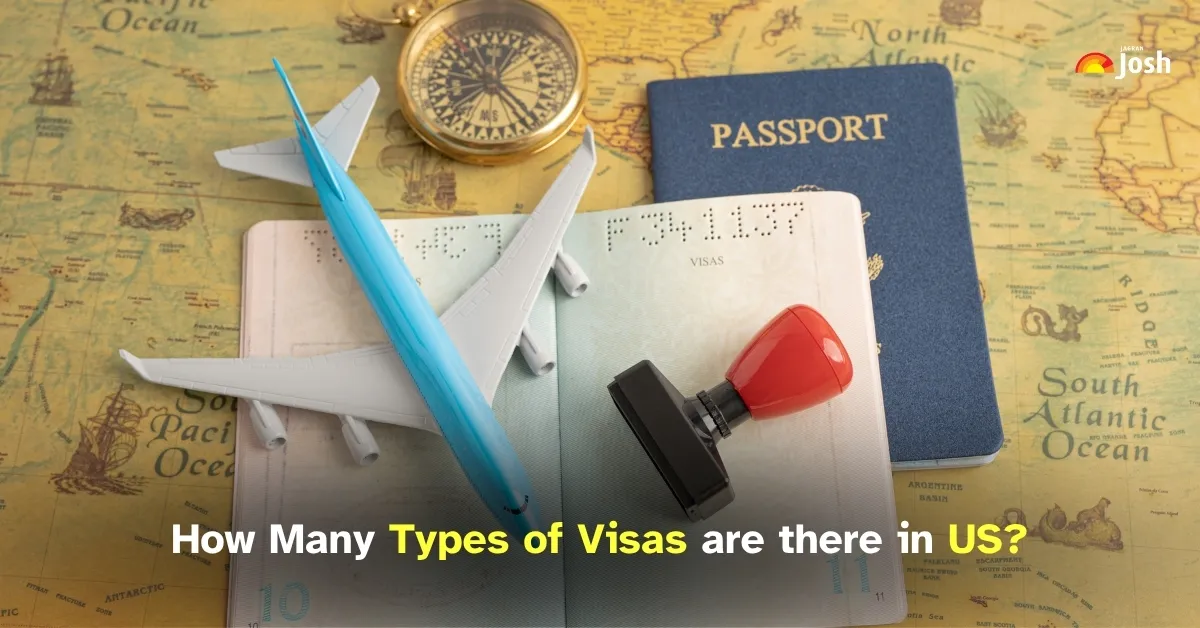One of the most common and frustrating problems people face when applying for a U.S. visa is incomplete or inaccurate documentation.
It may sound simple, but even a small oversight, like a lack of signature, an outdated bank statement or a typo in your name, can lead to delays or direct rejection. But do you know what a US visa is?
A US visa is your official permission slip from the U.S. government that lets you apply to enter the country for a specific reason and for a certain amount of time.
The United States has many different types of visas. These visas are usually divided into two main categories: Non-immigrant visas and immigrant visas. In this article we will look at the different types of American visas and what each is for.
What is a USA Visa?
A USA visa is an official permission, usually a stamp or sticker in your passport, that allows someone from another country to ask to enter the United States.
It's basically a "green light" from the U.S. government, letting them know why you want to visit (like for tourism, studying, or working) and for how long.
While having a visa is a crucial step, it doesn't guarantee entry. When you arrive at a U.S. airport or border, a Customs and Border Protection officer will make the final decision on whether you can come in and for how long.
(Just a quick note: U.S. citizens don't need a visa to enter the U.S. But if you're a U.S. citizen planning to travel to other countries, you might need a visa from that country's embassy.)
How Many Types of Visas are There in the USA?
According to the U.S. Department of State, the country offers a wide array of visa types, primarily categorised into two main groups based on the purpose and duration of stay:
1. Nonimmigrant Visas: These are for foreign nationals who intend to come to the U.S. for a temporary period and specific purposes. This category includes a vast range of visas, some of the most common being:
-
- Visitor Visas (B-1/B-2): For tourism, vacation, visiting family/friends, medical treatment (B-2), or business activities like attending conferences and negotiating contracts (B-1).
- Student Visas (F, M, J): For academic students (F-1), vocational students (M-1), and exchange visitors (J-1) participating in cultural exchange programmes (e.g., au pairs, interns, and scholars).
- Temporary Work Visas (e.g., H, L, O, P, R, TN): For various types of temporary employment, such as speciality occupations (H-1B), intra-company transfers (L-1), individuals with extraordinary ability (O-1), athletes/entertainers (P visas), religious workers (R-1), and NAFTA professionals (TN).
- Transit Visas (C): For individuals passing through the U.S. en route to another country.
- Diplomatic and Official Visas (A, G, NATO): For foreign government officials, employees of international organisations, and NATO personnel.
2Immigrant Visas: These are for foreign nationals who intend to live permanently in the United States. Obtaining an immigrant visa is generally a step towards becoming a lawful permanent resident (Green Card holder). Common types include:
-
- Family-Based Immigrant Visas: Sponsored by a U.S. citizen or lawful permanent resident for close family members (spouses, children, parents, siblings, and fiancés).
- Employment-Based Immigrant Visas (EB-1, EB-2, EB-3, EB-4, EB-5): For individuals seeking permanent employment in the U.S., categorised by skill level, extraordinary ability, or investment.
- Diversity Immigrant Visas (Diversity Lottery): An annual lottery program that makes a limited number of visas available to individuals from countries with historically low rates of immigration to the U.S.
- Special Immigrant Visas: For specific categories such as religious workers, certain former U.S. government employees, and others.
In a Nutshell
| Visa Category | Sub-Categories (Examples) | Purpose | Key Characteristic |
Nonimmigrant Visas | B-1/B-2 (Visitor) | Tourism, visiting family, medical treatment, and business trips | Temporary stay for specific purposes. |
| F-1/M-1 (Student) | Academic or vocational study | Must return to the home country after studies. | |
| J-1 (Exchange Visitor) | Cultural exchange programs (e.g., au pair, intern) | Focus on learning and cultural exchange. | |
| H-1B (Speciality Occupation) | Temporary work in a specialised field (e.g., IT, engineering) | Requires a job offer and employer sponsorship. | |
| L-1 (Intra-company Transfer) | Transferring employees within the same company to the U.S. office | For managers, executives, or specialised knowledge. | |
| O-1 (Extraordinary Ability) | For individuals with exceptional ability in the arts, sciences, and business | Requires national or international acclaim. | |
| P (Athlete/Artist) | Performing as an athlete or entertainer | For internationally recognised individuals/groups. | |
| R-1 (Religious Worker) | For temporary religious work | Must be part of a non-profit religious organisation. | |
| C (Transit) | Passing through the U.S. en route to another country | Short-term, only for transit purposes. | |
| TN (NAFTA Professional) | Professionals from Canada/Mexico under NAFTA/USMCA | Simplified process for eligible Canadian/Mexican professionals. | |
| Immigrant Visas | Family-Based | For immediate relatives (spouses, children, parents) of US citizens/LPRs | Leads to a Green Card (permanent residency). |
| Employment-Based | For individuals seeking permanent employment in the U.S. | Categorised by skill level, investment, or extraordinary ability. | |
| Diversity Visa (DV) Lottery | For individuals from countries with historically low immigration rates | Annual lottery for a limited number of visas. | |
| Special Immigrant | Specific categories (e.g., religious workers, certain US gov. employees) | For specific circumstances defined by law. |
Each visa type has its own set of eligibility criteria, application processes, and required documentation, making it crucial for applicants to identify the correct visa for their specific purpose of travel.
